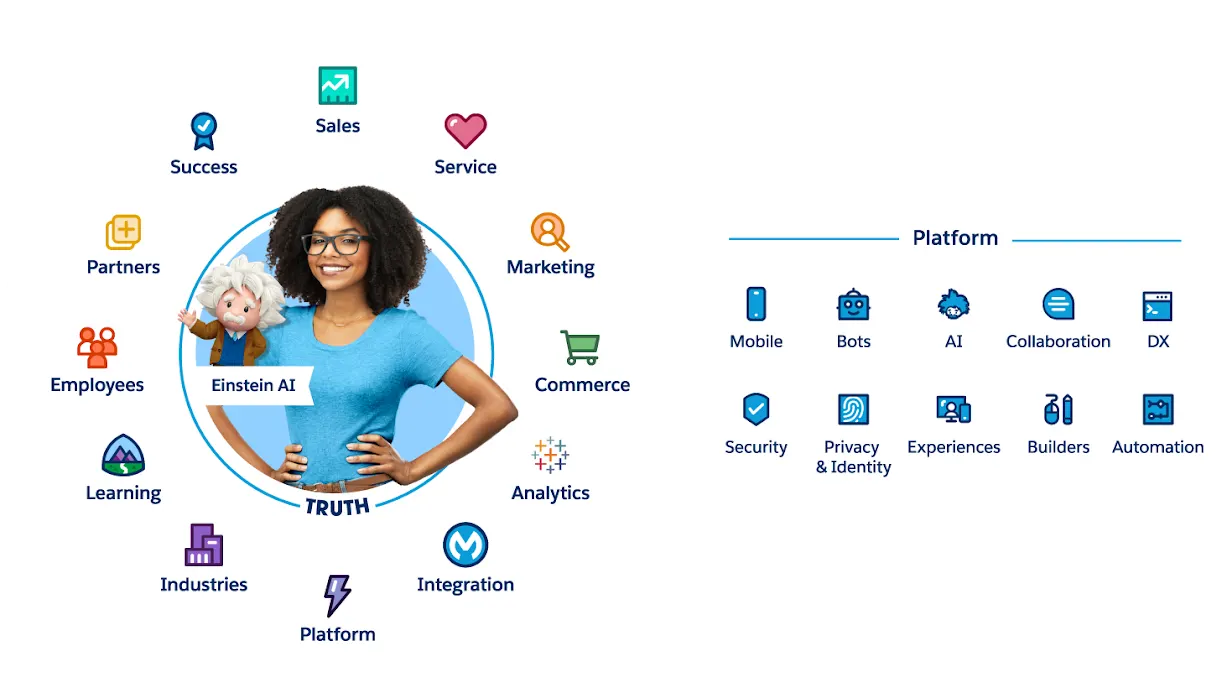Top 5 Reasons to Run Any Project on Salesforce
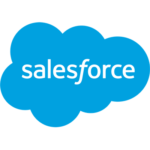
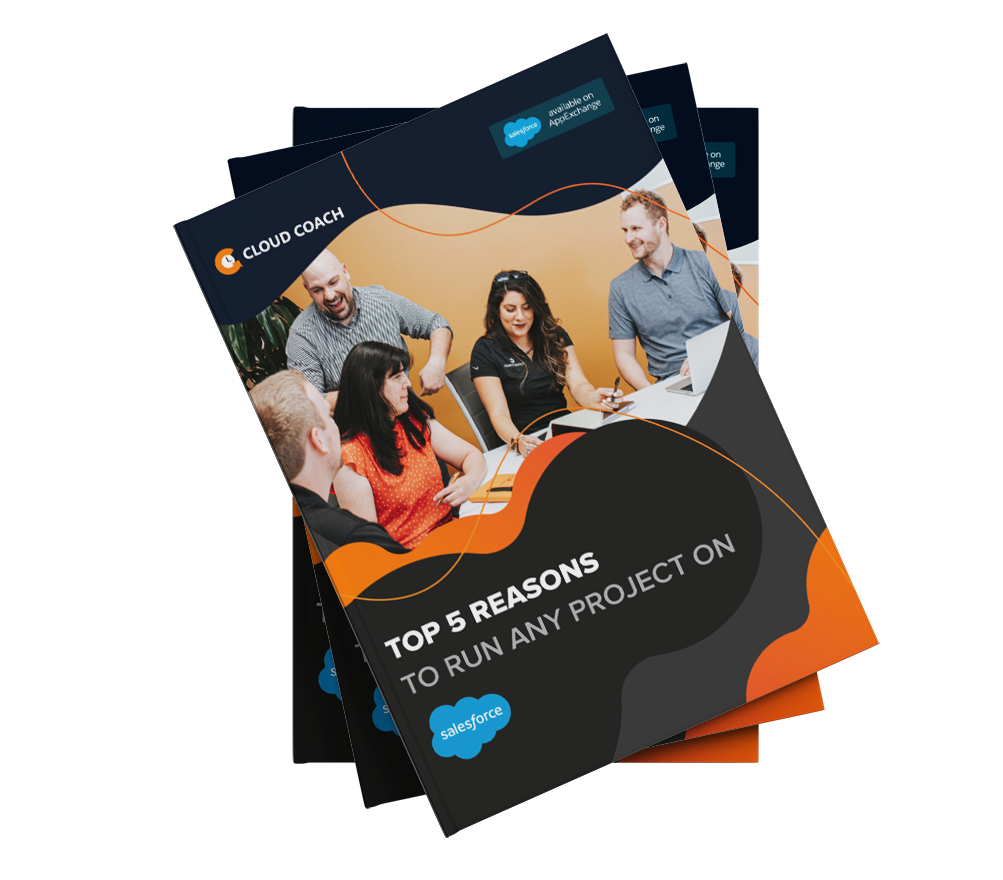
This interactive eBook explains the top five reasons why organizations like yours already choose to run their projects, processes and workflows on the Salesforce platform. Read on to find out more.
Brought to you by
CHAPTER 1
Get More From Salesforce
1. Get More From Salesforce
Your organization is already investing a lot in Salesforce, in both money and time. So why not leverage that existing investment to expedite and improve your project management processes?

Leverage your admin knowledge
When looking at the right solutions for your organization, there are lots of factors to consider; like data security and costs, for example. Something that is often overlooked though, is knowledge.
Your business uses Salesforce already. And you’ve likely invested in your people, ensuring they have sufficient training levels to take on the tasks required by a Salesforce admin. If you decide to use an off-Salesforce platform solution, you’ll need to upskill even more members of your team to administer a third-party project management platform. By using a system native to Salesforce, most of your training is already done!
Cut IT & procurement headaches
Deciding on the right solution for your organization can be transformative. Quicker projects, happier customers, and more fruitful working partnerships. But once you’ve decided on the best system for your business, there’s one final obstacle that you need to navigate through.
Procurement and IT teams will naturally be cautious about adding another tool to your organization’s ecosystem, particularly when that tool is intended to house vast amounts of internal and external customer data and information.
If you decide to use a Salesforce-native app for your projects, such as Cloud Coach, all your data is stored by Salesforce with your CRM data, so you can skip the lengthy security check stage completely: speeding up your time to value from your new solution!
CHAPTER 2
Customer 360
2. Customer 360
What is a customer 360?
With a single, shared view of your customers, your teams can better meet your customer demands.
Salesforce defines Customer 360 as a way to ‘give everyone in your company a single, shared view of your customers’. This means that all of your teams, from marketing and sales, through to commerce, service and IT departments, can all work as one – allowing you to deliver personalized experiences that customers love, and giving you the foundations to build lasting, trusted relationships.
Linking Sales and Service Clouds
Projects form a vital component of your Customer 360. Onboarding projects complete the crucial link between Sales and Service, while ongoing Customer Success initiatives and projects are a great way to keep to build and improve customer relationships on Salesforce. But only if you’re using the correct systems.
When managing customer relationships, the best solutions connect your entire business around the customer, from sales, service, and marketing to IT, and analytics. For the best customer experiences, it’s vital you’re using the same system for both sales, onboarding and service.
We loved the ability to see a complete picture of our entire lifecycle. This tool is highly flexible and allows for visibility into large projects and the fine details of quick turnaround work.
G2 Review
Managing your projects using Salesforce means you can easily log, manage, and analyze all customer activity in one place. The Salesforce platform provides an ecosystem of fully connected mobile and social tools all powered by the cloud, with Customer 360 at the heart. With Sales Cloud and Service Cloud working in tandem on the same platform, your business can keep up with the speed, innovation, and connectivity that produces great customer experiences leading to customer loyalty. By connecting all of your data, you can build 360-degree views of each customer and provide seamless interactions across any channel or department.
By using one of the Salesforce native Project Management or PSA tools from the AppExchange you can seamlessly connect onboarding projects to all your favorite Salesforce records such as accounts, opportunities or cases, so customer data flows freely giving you that true 360 Customer view. Deals can be closed from the Sales Cloud, Customers can be onboarded using a Salesforce-native app like Cloud Coach, and ongoing support can be provided from the Service Cloud. The whole customer journey with you, managed without leaving Salesforce.
Create tailored, relevant customer experiences
Although processes are largely repeatable, no two customers are the same. By giving your team a way to access crucial customer data (on anything from needs, history, interests and even their frustrations), your team can serve experiences tailored that meet the needs of your customers. It sounds so simple, doesn’t it? By managing projects from within the Salesforce platform account managers will always have access to up-to-date information before in advance of any customer or client call under the account record, be it project timelines, change requests, billing information and more.
CHAPTER 3
Better KPI Reporting
3. Better KPI Reporting
Collecting data is one thing, but presenting it to your management team in a manner that lets them make informed decisions to improve the business is another. In a busy work day, accessing that information needs to be easy, sharing it needs to be simple, and it should be presented in an easily digestible, relevant format.
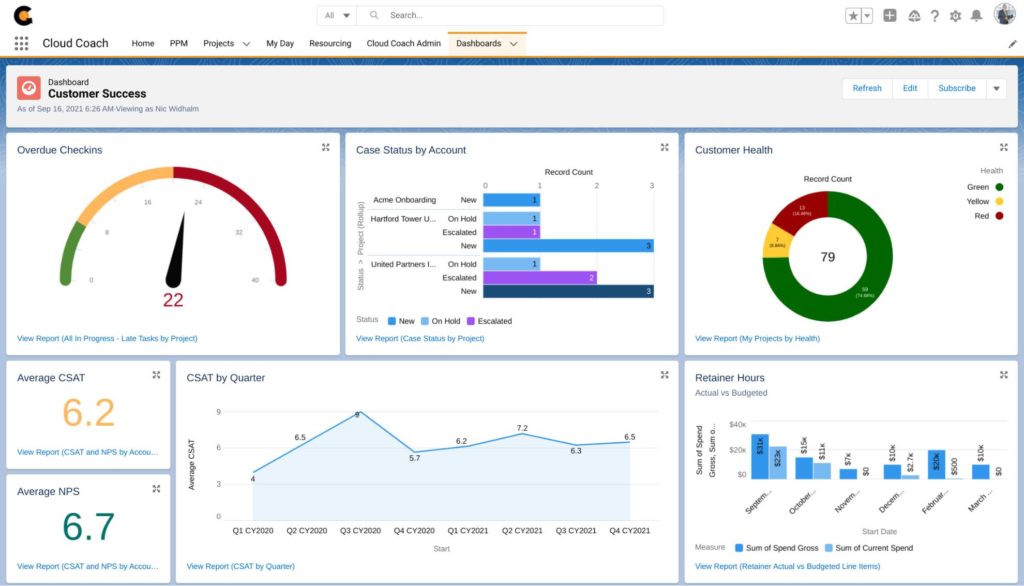
Customization
That’s why your Salesforce project management solution should come with a set of out of the box reports while also allowing further customization, so all the reports and dashboards that your executives need to make decisions to drive your business forward are always at hand.
By running your projects on Salesforce, you can report on all your KPIs in real time, 24 hours a day from any device, and easily share with relevant executives – to same even more time, these emails can be automated to send at a regular cadence of your choosing!
CHAPTER 4
Resource Management
4. Resource Management
Managing portfolio, programs and projects invariably involves managing lots of moving parts. And, with people costs invariably forming a large proportion of your costs, finding the right resources with availability at the right time is one of the trickiest, and most important, aspects to master.
For any project or planned project, it is essential to have a clear understanding of what employees are suited to the task at hand, what level of expertise in the skill each employee has, and ultimately are they available when they are needed?
Optimizing your project management through resource management on Salesforce allows your organization to always prioritize high value work with your current availability of resources.
A Salesforce-native solution can help you deliver the functionality needed to plan and execute your projects. With a tool that is capable of capacity and demand management, resource utilization, and can track both time and progress, you can improve resource efficiency and utilization. Ultimately benefiting your business’ bottom line.
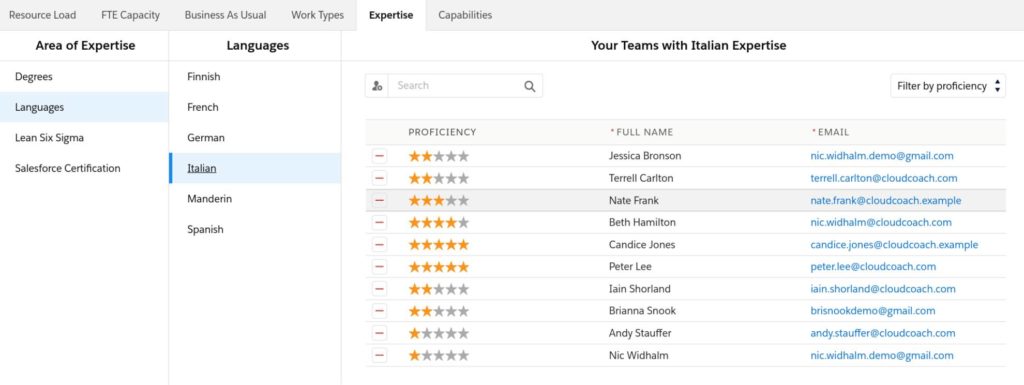
Assign your team to projects based on skills and availability
Project execution involves a vast array of team members, carrying out a range of specialized tasks at different times throughout the project.
Making sure you manage your processes as effectively as possible is going to be key to trust, satisfaction and, ultimately, project success. If you’re managing multiple projects and business units, the process of assigning team members to a project can be a daunting administrative task… But it doesn’t need to be.
CHAPTER 5
Reduce Handoffs
5. Reduce Handoffs
Remove ambiguity from internal handoffs
Managing projects can be a time-consuming process. From sales, through to project teams and ultimately customer success teams, there’s a lot of information and knowledge that needs to be transferred in a structured – and ideally repeatable – way within your organization.
By running your projects from Salesforce, the handoff from Sales could be as simple as a single click, allowing you to automatically launch your projects when opportunities close. You can convert opportunities and CPQ into new projects in seconds, at any point during the sales cycle. You can even leverage templates to drive best practices through your company and keep your whole updated on progress by displaying your onboarding projects status back to your opportunity and account records.
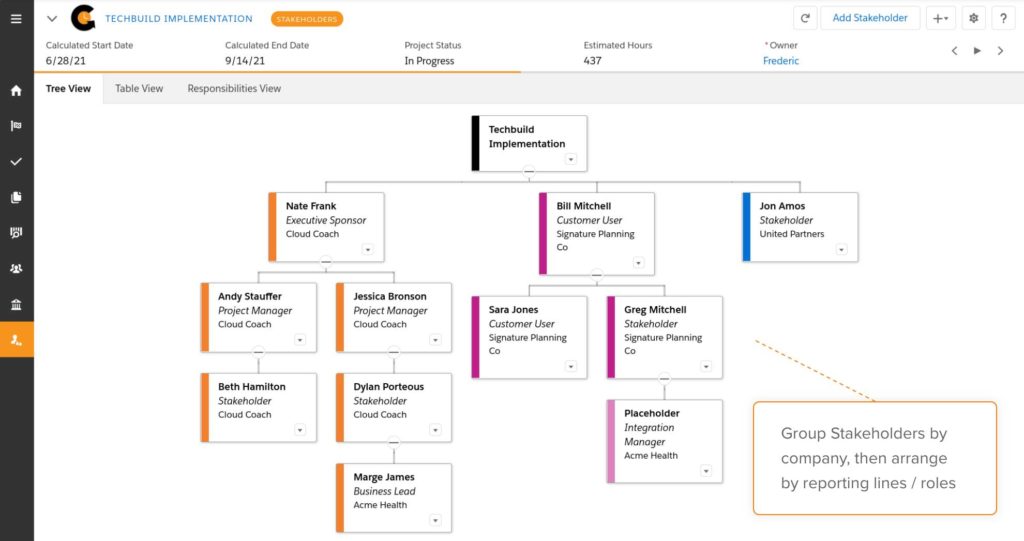
One system gives you control
By storing all of your information from across the whole project lifecycle in one single system, you can manage all your stakeholders – and your time – far more effectively. All data is accessible from the same place projects are being managed – meaning there’s no need to switch between Salesforce, spreadsheets or any other form of siloed technologies something that takes time and compromises quality. Everyone is working from the same system, with the same information; anything from client communications through to task assignments, all managed in a single platform.
Salesforce also ensures that everyone has visibility of the project. When delivering client-facing projects you can use an ‘external view’ and communities to bring customers into the picture, allowing you to share project updates in real time, alongside other information like project meeting minutes. Crucially, you can also use permissions to ensure you’re sharing the right information with the right people, at the right time.
CHAPTER 6
Conclusion
What Next?
So, you’ve taken a look at how using Salesforce for your projects could be the right step for your organization. The next question you need to explore is: how do I make that happen?
By leveraging the expertise of your consulting partners, or even your internal Salesforce experts, you may have the capabilities to build a basic project management solution on Salesforce in house if your needs are simple and unlikely to change. Or you might considering buying an AppExchange solution instead. Before making any decision though, there are a number of factors you should consider. Cost, control, maintenance and risk will all need to be carefully evaluated.
There’s a great Buy or Build guide available at Projects on Salesforce to help you decide what makes the most sense for your organization.
You might also be interested in…
8 Capabilities Your Project Management Solution Should Have
What should you consider when choosing a solution for customer Onboarding? Our eBook explains what features you should look out for.


















